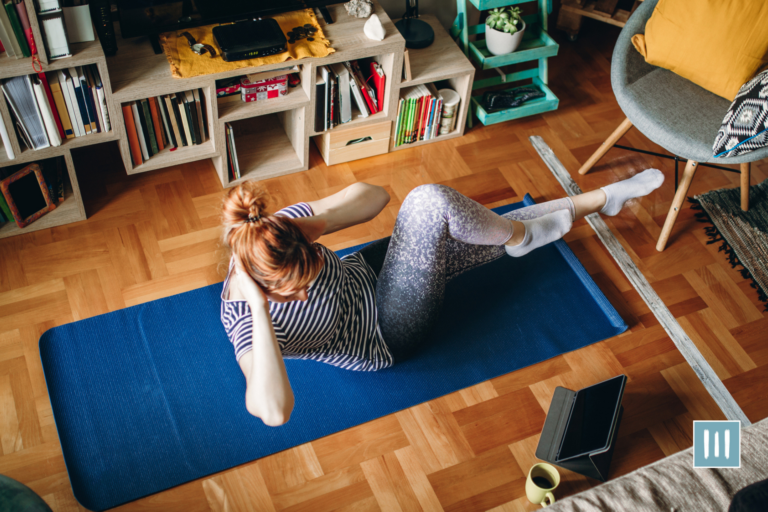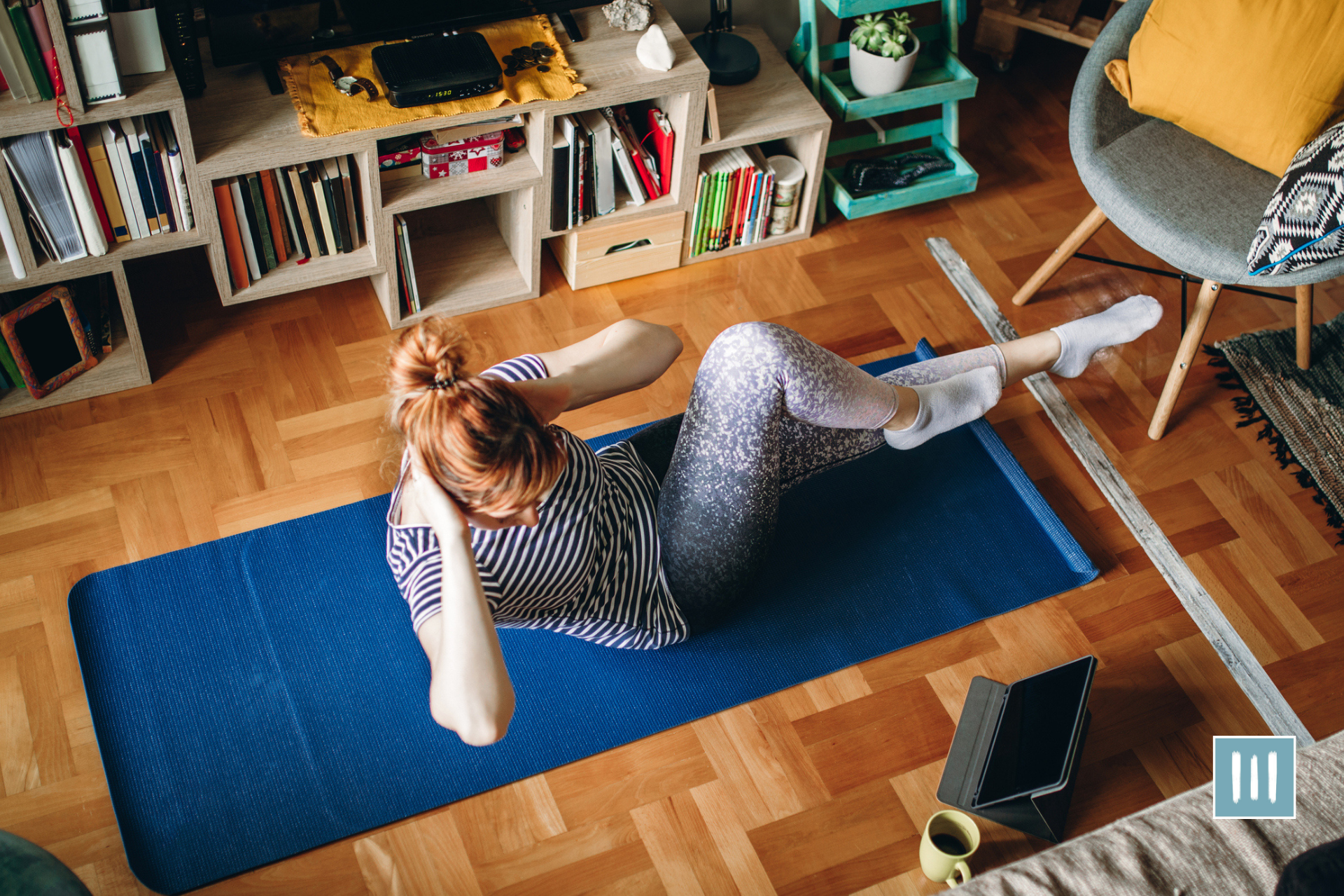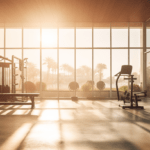Are you ready to embark on a journey to fitness mastery from the comfort of your own home? Get ready to sweat, challenge yourself, and achieve your fitness goals with beginner-friendly effective home workouts!
No more excuses about not having time to go to the gym or feeling self-conscious in a crowded workout class. With the right mindset and a well-designed home workout routine, you can transform your living room into your fitness sanctuary.
Imagine waking up each day and stepping into your home workout space, feeling energized and motivated to conquer your fitness goals. No need to battle the traffic or wait for equipment at the gym. Your home workout space is a sacred place where you can unleash your inner athlete and push yourself to new limits.
Whether you’re a complete beginner or someone who’s been dabbling in fitness for a while, these beginner-friendly effective home workouts are designed to cater to your needs and help you progress at your own pace.
So grab your Minimal Tumbler, put on your favorite workout playlist, and let’s dive into the world of home workouts where you can become the master of your fitness journey.
Key Takeaways
- Setting up a proper home workout space is important for creating a conducive environment for exercise, including clearing clutter, finding the right spot, organizing equipment, and adding motivational elements.
- Basic equipment such as dumbbells and resistance bands can be effective for home workouts.
- Designing a home workout routine should involve considering fitness goals, workout frequency, preferred exercises, and targeting major muscle groups.
- Staying motivated and consistent is crucial for achieving fitness goals, and this can be done by setting small, achievable goals, finding an enjoyable workout routine, creating and sticking to a schedule, tracking progress, and having an accountability partner.
Benefits of Home Workouts
You’ll be amazed at the numerous benefits of home workouts, from increased flexibility and strength to a healthier mind and body. It’s like opening a treasure chest of wellness right in the comfort of your living room.
When you commit to regular home workouts, you’ll notice that your body becomes more flexible over time. Those tight muscles that are used to limit your range of motion will gradually loosen up, allowing you to move more freely and comfortably. This newfound flexibility will not only make everyday activities easier, but it will also improve your performance in other physical activities, such as sports or dancing.
In addition to increased flexibility, home workouts will also help you build strength. By consistently challenging your muscles with bodyweight exercises or simple equipment like resistance bands or dumbbells, you’ll gradually develop stronger muscles and a more toned physique. The best part is that you don’t need a fancy gym membership or expensive equipment to achieve these results. With just a small investment in some basic equipment and a commitment to regular workouts, you can start seeing noticeable changes in your strength and muscle definition.
But the benefits of home workouts don’t stop at the physical level. Engaging in regular physical activity at home can also have a positive impact on your mental well-being. When you exercise, your brain releases endorphins, which are chemicals that boost your mood and reduce feelings of stress and anxiety. So, not only will you feel stronger and more flexible after a home workout, but you’ll also experience a sense of mental clarity and overall well-being.
Plus, by exercising at home, you have the opportunity to create a peaceful and personalized environment that enhances your workout experience. So why wait? Start your journey to a healthier mind and body by incorporating beginner-friendly home workouts into your daily routine.
Setting Up Your Home Workout Space
To create an ideal workout environment, make sure your home space is properly organized and set up. Here are four key steps to help you set up your home workout space:
- Clear the clutter: Remove any unnecessary items from your workout area to create a clean and focused space. Clutter can be distracting and may hinder your ability to fully engage in your workout. Keep only the essentials, such as your exercise equipment, water bottle, and towel, within reach.
- Find the right spot: Choose a location in your home that’s well-lit and has enough space to accommodate your workouts. Consider factors like ventilation and flooring. A well-ventilated space will help keep you comfortable during your workouts, while suitable flooring, like a yoga mat or rubber flooring, will provide support and cushioning for your exercises.
- Set up your equipment: Arrange your exercise equipment in a way that’s easily accessible and organized. This will save you time and effort during your workouts, allowing you to focus on your exercises. Consider investing in storage solutions, like shelves or bins, to keep your equipment neatly organized and easily accessible.
- Add motivational elements: Personalize your workout space with motivational elements that inspire and energize you. Hang up motivational quotes or pictures that remind you of your fitness goals. Play your favorite upbeat music to create a positive and energizing atmosphere. By incorporating these motivational elements, you’ll enhance your workout experience and fuel your subconscious desire for mastery.
By following these steps and setting up your home workout space effectively, you’ll create an environment that’s conducive to a successful and enjoyable workout. A well-organized and motivational space can significantly contribute to your overall fitness journey and help you achieve your goals. So take the time to set up your home workout space, and get ready to embark on your path to mastery.
Basic Equipment for Effective Home Workouts
When it comes to getting started with home workouts, having a few basic pieces of equipment can elevate your exercise routine.
While it’s possible to do bodyweight exercises and get a great workout, incorporating some equipment can add variety and intensity to your workouts.
One essential piece of equipment is a set of dumbbells. With dumbbells, you can perform a wide range of exercises that target different muscle groups. They’re versatile and can be used for both strength training and cardiovascular workouts. Start with a set of dumbbells that feel challenging but manageable for your current fitness level, and gradually increase the weight as you get stronger.
Another important piece of equipment to consider is a resistance band. Resistance bands are lightweight, portable, and affordable, making them a great addition to any home gym. They provide constant tension throughout the exercise, which can help improve muscle strength and endurance. Resistance bands can be used for various exercises, such as bicep curls, squats, and shoulder presses. They can also be used to assist or modify bodyweight exercises, making them suitable for all fitness levels. Incorporating resistance bands into your home workouts will help you target your muscles from different angles and add an extra challenge to your routine.
By investing in a set of dumbbells and a resistance band, you’re equipping yourself with the basic tools to create effective home workouts. These pieces of equipment will allow you to target different muscle groups, increase the intensity of your exercises, and add variety to your routine. With these basic pieces of equipment, you’ll be well on your way to mastering your home workouts and achieving your fitness goals.
Once bodyweight moves like the glute bridge feel easy, you can place a dumbbell on your hips or loop a mini-band above your knees for extra glute activation. Just make sure you’re feeling the work in your glutes—not your lower back—before progressing.
Want even more variety? A sturdy box or step is perfect for exercises like step-ups, box squats, or elevated push-ups, giving you more ways to challenge yourself without needing extra space.
These simple tools make it easy to scale your workouts, target more muscle groups, and keep your routine fresh
Bodyweight vs. External Weights: What Beginners Should Know
You don’t need a dumbbell in hand for your workout to be effective. Bodyweight exercises like squats, lunges, and push-ups provide plenty of resistance on their own—and are often the best place to start.
For beginners, focusing on bodyweight movements helps you master proper form and build a strong foundation. It allows you to learn how your body moves, which muscles to activate, and how to stay safe. For example, when doing glute bridges, using your glutes instead of overworking your lower back is key—and easier to focus on without external weights.
Jumping into weighted exercises too soon can increase your risk of injury or lead to poor movement habits. Once you’ve built confidence and control with bodyweight workouts, adding dumbbells, kettlebells, or resistance bands can help you level up and add variety.
How to Do the Superman With Pull-Down
The Superman with pull-down is a great bodyweight move for working your back, glutes, and shoulders—perfect for balancing your home workout routine.
- Start: Lie face down on a mat with arms bent at 90 degrees, forming a “goalpost” shape.
- Lift: Engage your core and glutes, then lift your chest, arms, and feet off the floor. Keep your gaze down to protect your neck.
- Pull: Extend your arms forward, then pull them back into the goalpost position like you’re doing a lat pulldown.
- Lower: Slowly return to the starting position. Repeat for 10–15 reps.
Want more challenge? Add a pause at the top or loop a resistance band around your hands during the pull for extra intensity.
Designing Your Home Workout Routine
Once you’ve established your fitness goals, it’s important to create a workout routine that is tailored to your specific needs and preferences. Designing a home workout routine can seem overwhelming at first, but with a little planning and creativity, you can create a routine that is both effective and enjoyable.
To begin, consider the amount of time you can dedicate to your workouts each week. It’s important to be realistic and choose a workout frequency that you can stick to consistently. Next, think about the types of exercises you enjoy and the areas of your body you want to focus on. This will help you determine which exercises to include in your routine.
To give you an idea of what a home workout routine could look like, here is a sample table:
| Day | Upper Body | Lower Body | Core |
|---|---|---|---|
| Monday | Push-ups | Squats | Plank |
| Wednesday | Dumbbell Rows | Lunges | Russian Twists |
| Friday | Shoulder Press | Deadlifts | Bicycle Crunches |
Feel free to adjust the exercises and days to fit your preferences and schedule. The key is to choose exercises that target all major muscle groups and provide a balanced workout. Start with lighter weights and gradually increase as you get stronger.
Aim for a Full-Body Approach
When building your routine, be sure to include movements that hit all the major muscle groups throughout the week: quads, hamstrings, core, back, chest, and shoulders. This ensures you’re getting a well-rounded workout and supporting balanced strength and muscle development. For example, squats and lunges target your quads and hamstrings, while push-ups and dumbbell rows hit your chest and back. Incorporating core exercises like planks or Russian twists helps build stability and overall strength.
Sample Bodyweight Substitutes (No Equipment Needed):
- Forward Lunge – Builds lower body strength and balance
- Hands-Elevated Push-Up – Great for upper body and core, beginner-friendly
- Glute Bridge – Activates the glutes and protects the lower back
- Superman with Pull-Down – Targets the back, glutes, and shoulders
Mixing bodyweight and weighted exercises keeps your workouts well-rounded, engaging, and tailored to your goals.
Creating a home workout routine is an opportunity for you to take control of your fitness journey. By designing a routine that aligns with your goals and preferences, you’ll be more likely to stick with it and achieve the results you desire. So get creative, have fun, and enjoy the process of mastering your own home workouts.
How to Structure a Beginner Bodyweight Circuit at Home
One of the simplest and most effective ways to start your home workout journey is by creating a beginner bodyweight circuit. Pick four exercises that target different muscle groups—like push-ups for your upper body, squats for your lower body, planks for your core, and lunges for balance and strength.
Do 10 to 15 reps of each exercise, moving from one to the next with little to no rest. Once you complete the full circuit, rest for 1 to 2 minutes. Try to repeat the entire circuit up to four times. This not only builds strength but also adds a cardio element as you keep your body moving with minimal downtime.
As you get stronger, feel free to add more reps or extra rounds to keep challenging yourself.
How to Level Up Your Home Workout
Once you’re comfortable with beginner moves, try these simple tweaks to challenge your body and stay motivated:
- Lunges with a Twist: Add dumbbells to your sides for resistance. Once you’ve nailed your form, progress to walking lunges to boost balance and control.
- Push-Up Progression: Start with incline push-ups using a step or box. Lower the incline over time, then move to full floor push-ups. For a serious challenge, elevate your feet for added core and upper body engagement.
- Upgrading Your Glute Bridge: Add a dumbbell or resistance band to increase difficulty—but only once you can activate your glutes and hamstrings without straining your lower back.
- Boosting Rows: Use resistance bands or dumbbells for rows to target your back. Add a 1–2 second pause at the top to increase muscle activation.
These upgrades will keep your routine fresh and your progress steady. Listen to your body and adjust as you go.
How to Do a Hands-Elevated Push-Up (And Make It Easier or Harder)
Hands-elevated push-ups are a great way to build upper body strength if you’re not ready for floor push-ups yet.
- How to do it: Place your hands shoulder-width apart on a sturdy surface like a step or bench. Step your feet back into a straight line from head to heels. Lower your chest toward the surface, keeping your elbows close and your core engaged. Push back up to the start. Aim for 10 to 15 reps.
- Adjust the challenge: The higher your hands, the easier the move. Lower the surface over time to get closer to floor push-ups. Once you’re confident, progress to floor push-ups—or elevate your feet for an extra challenge.
Start where you are, focus on good form, and level up as your strength improves.
How to Do a Glute Bridge (and Ways to Level Up)
The glute bridge is a great beginner exercise for building lower-body strength—especially in your glutes and hamstrings.
- How to do it: Lie on your back with knees bent and feet flat on the floor, hip-width apart. Press through your heels, squeeze your glutes, and lift your hips until your body forms a straight line from shoulders to knees. Pause at the top, then lower with control. Aim for 10–15 reps.
- Make it harder:
- Add a dumbbell or weight plate across your hips
- Use a mini resistance band just above your knees
- Try single-leg glute bridges for extra core and balance work
You should feel this in your glutes and hamstrings. If you feel it in your lower back, reset your form and skip added weight until you’re stable.
How to Do a Proper Forward Lunge
The forward lunge is a great home workout move for building strength in your legs and glutes while also working your core for balance.
- Start: Stand with your feet hip-width apart, arms at your sides or clasped in front for balance.
- Step and lower: Take a big step forward with one leg and bend both knees. Your front thigh should be parallel to the floor, and your knee should stay over your ankle. Keep your chest lifted and core engaged.
- Return: Push off your front foot to return to the starting position.
- Repeat: Do 10–15 reps on one leg, then switch sides.
Want more of a challenge? Hold dumbbells or progress to walking lunges once your form is solid.
Tips for Staying Motivated and Consistent
Stay motivated and consistent with your home fitness routine by setting small, achievable goals for yourself. One of the keys to staying motivated is to have a clear vision of what you want to achieve. By setting small goals, you can easily track your progress and feel a sense of accomplishment along the way.
Start by setting goals that are specific, measurable, attainable, relevant, and time-based (SMART goals). For example, you could aim to do five push-ups every day for a week, and then increase it to ten push-ups the following week. This allows you to gradually challenge yourself and build up your strength over time.
To further enhance your motivation and consistency, here are four tips to keep in mind:
- Find a workout routine that you enjoy: When you enjoy the activities you’re doing, it becomes easier to stay motivated and consistent. Experiment with different types of workouts, such as yoga, HIIT, or dance, until you find something that you genuinely enjoy and look forward to.
- Create a schedule and stick to it: Treat your home workouts as you would any other appointment or commitment. Set aside specific times each day or week for your workouts and make them non-negotiable. Consistency is key when it comes to seeing progress and maintaining motivation.
- Track your progress: Keep a record of your workouts, whether it’s through a fitness app, a journal, or a simple spreadsheet. Seeing how far you’ve come can be incredibly motivating and help you stay on track. Celebrate your achievements, no matter how small they may seem.
- Find an accountability partner: Having someone to hold you accountable can make a world of difference. Whether it’s a friend, family member, or online fitness community, find someone who shares your goals and can provide support and encouragement along the way.
Be patient with yourself, celebrate your progress, and keep pushing forward. With time and dedication, you’ll develop the discipline and habits necessary to achieve your fitness goals.
Frequently Asked Questions
Can I achieve the same results with home workouts as I would with a gym membership?
Yes, you can absolutely achieve the same results with home workouts as you would with a gym membership. With dedication and the right exercises, your home can become your personal gym for achieving your fitness goals.
How long should my home workouts be to see effective results?
To see effective results from your home workouts, aim for at least 30 minutes of exercise per session. This duration allows your body to engage in a variety of exercises, targeting different muscle groups for a well-rounded workout.
Are there any specific home workouts that are better for weight loss?
To maximize weight loss, focus on high-intensity workouts like interval training or circuit training. These workouts combine cardio and strength exercises, boosting calorie burn and building lean muscle for long-term fat loss.
Can I build muscle with home workouts alone?
Yes, you absolutely can build muscle with home workouts alone. By focusing on compound exercises like push-ups, squats, and lunges, and progressively increasing resistance, you’ll be on your way to a strong and sculpted physique.
What are some common mistakes to avoid when doing home workouts?
When doing home workouts, common mistakes to avoid include improper form, neglecting warm-ups and cool-downs, not challenging yourself enough, and overtraining. By being mindful of these mistakes, you can maximize the effectiveness of your workouts.















